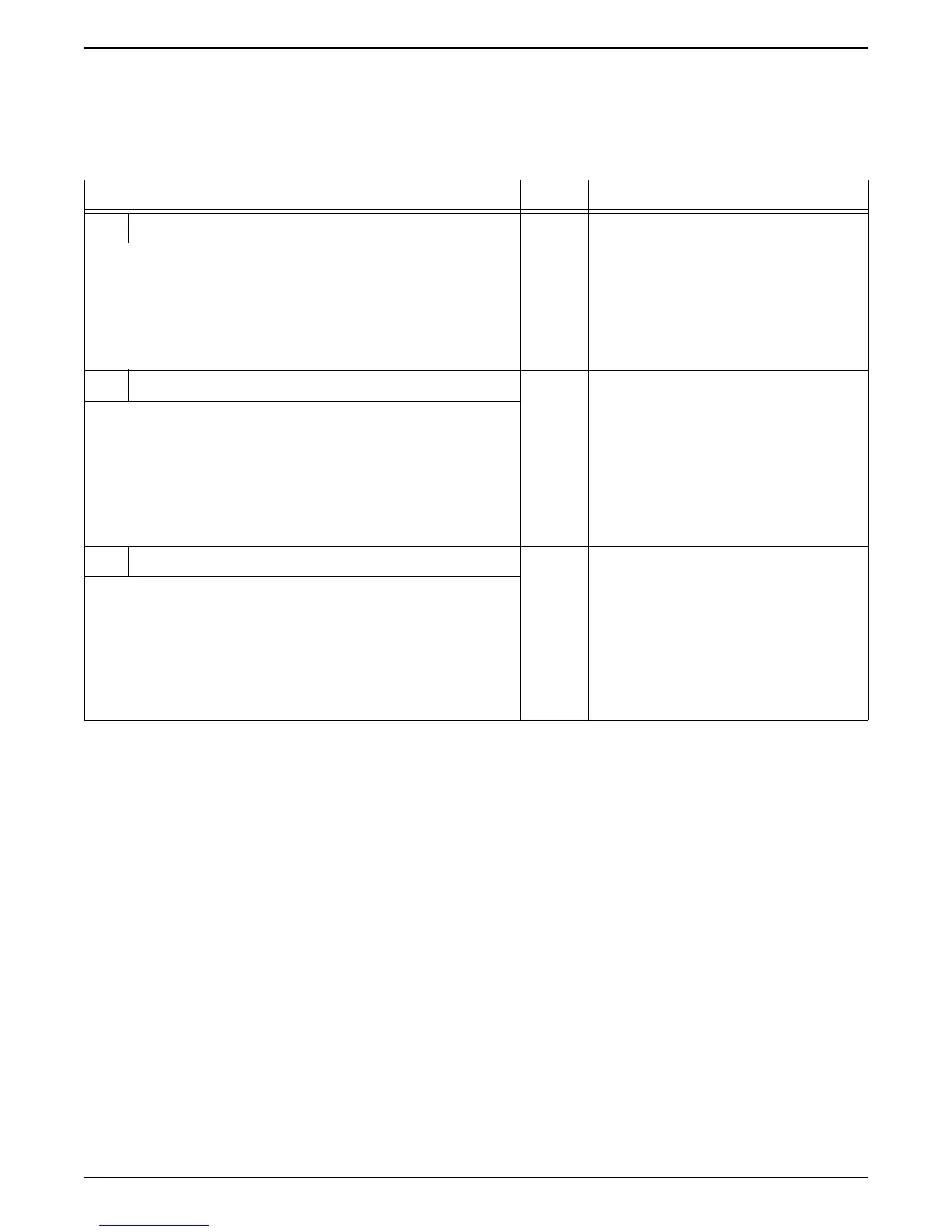DSG-423 FUEL SYSTEM
04-27
The pinpoint tests below should be performed after the preliminary tests and “Engine Cranks but Will Not Start”
chart Steps 1-3. Any electrical diagnostics should have been performed to eliminate any sensor, GCP or solenoid
valve problems before proceeding.
Diagnostic Aids
Regulator Assembly (Converter & FCV): Overheating is typically related to a cooling or coolant problem. There is
a possibility of a gasket leak inside the regulator, which would allow coolant to pass through to the fuel supply. This
may effect the emissions if large enough. In this situation the coolant level should consistently drop, as coolant is
lost through the fuel path. Refer to section 457R-1 for servicing the regulator. If no other problems have been
identified, replace the fuel management assembly with a known good part of the same pressure range. Retest.
Engine Overheats
Test Step Result Action to Take
1 Check for icing or freezing of the Regulator. Yes
No
The presence of ice on the converter,
with the engine running, indicates the
possibility of a coolant supply problem.
Check Coolant level and the coolant
system for leaks. Check for proper
coolant type.
Go to Step 2.
• With the Engine at Idle.
• Check for ice or frost build up on the converter casing and
outlet port.
Is ice present?
2 Check regulator operation. Yes
No
The Regulator is functioning properly
and the problem may be with the FCV
valve, vacuum hoses or carburetor.
Go to J3.
The Regulator is malfunctioning. See
section 475R-1 for service of the
regulator. Repair or replace as
necessary.
• Using Woodward WTK-1 secondary pressure gauge as
described in section 475G-1. (note: the secondary spring
color and pressure range)
• Start the engine.
Is the pressure constant and at -1.5 inches of w.c. as
specified?
3 Check air valve operation. Yes
No
Refer to section 475-1 for servicing the
carburetor.
Service the carburetor (see section
475-1) and retest. Refer to the
Diagnostic Aids below.
• Using the WTK-1 test kit, connect the vacuum gauge
between the carburetor and the FCV valve to measure the
carburetor air valve vacuum (AVV).
• With the engine at idle and accelerating observe the
amount of measured vacuum.
Is the measured vacuum non-linear and outside the
specifications?
